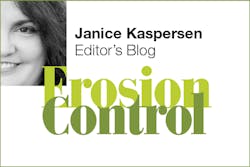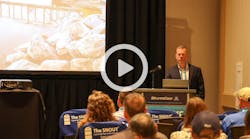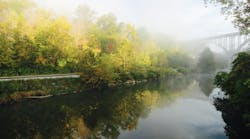
As you’re probably aware, EPA and the US Army Corps of Engineers under the new administration are proposing to rescind the beleaguered Waters of the US Rule, also known as the Clean Water Rule, that went into effect in 2015. You have a narrow window to comment if you wish (details below), but it closes in less than a month.
As I outlined in this editorial for Stormwater magazine, the process is taking place in two steps: The first will change the Code of Federal Regulations so that it contains the definition of “waters of the US” that was in place before the Clean Water Rule was issued. The second will put in place an even narrower definition that, the administration says, “is in line with Supreme Court Justice Antonin Scalia’s opinion in the 2006 Rapanos v. United States case. Scalia’s definition explains that federal oversight should extend to ‘relatively permanent’ waters and wetlands with ‘a continuous surface connection’ to large rivers and streams.” Essentially, this would roll back protections on ephemeral streams and wetlands within floodplains that were originally covered by the Clean Water Act.
The public comment period for the first step opened last week. The deadline to submit a comment is August 28, 2017. Unlike some rules that have a longer window—often 90 or, in some cases, as long as 180 days—this one has just a 30-day public comment period. (A group of senators last month requested that EPA and the Corps of Engineers extend the comment period, but as yet the deadline has not moved.)
You can submit your comments on this website. When you do, refer to Docket ID No. EPA-HQ-OW-2017-0203.
A bit of background: In 2014, EPA and the Army Corps of Engineers jointly released the Clean Water Rule, designed to clarify what is covered under the protection of the Clean Water Act. The two agencies emphasized that they were not trying to broaden the original scope of the CWA, only to clarify it. This was necessary, they said, because a number of Supreme Court rulings—including Rapanos v. US—had confused and weakened the definition of what the CWA actually protects. Without the clarification of the Clean Water Rule, EPA and the Corps said at the time, the effects of the Supreme Court’s decisions left nearly 60% of the nation’s streams and wetlands—and the drinking water sources for about a third of the US population—essentially unprotected.
Once it was proposed, the rule faced challenges in court—several states, including Oklahoma, of which EPA administrator Scott Pruitt was then attorney general, sued to block it—and was stayed by the Sixth Circuit Court of Appeals in 2015. A presidential executive order in February of this year called for a review of the rule with an eye towards balancing pollution prevention with promoting economic growth. The move was applauded by the agricultural and development industries, which had strongly opposed the Clean Water Rule.
Your work within the erosion and sediment control industry gives you a good perspective on this issue and uniquely qualifies you to offer an informed opinion. I urge you to do so before the deadline—and during the next step of the process as well.
About the Author
Janice Kaspersen
Janice Kaspersen is the former editor of Erosion Control and Stormwater magazines.

